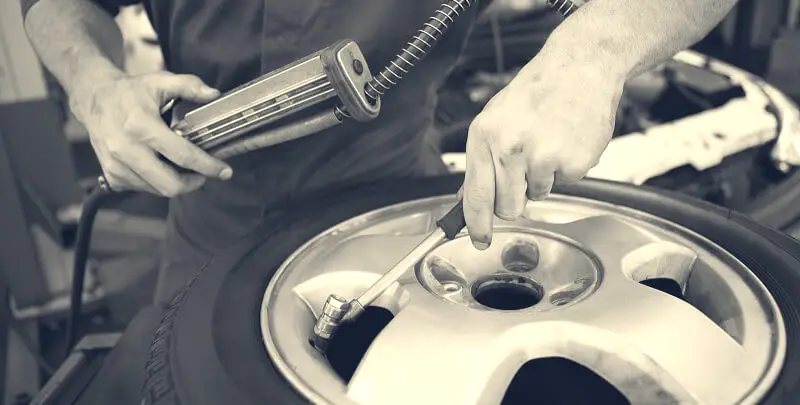What Is The Long Term Effect Of Under Inflated Tires?

Under-inflated tires can have several long-term effects on both the tires themselves and the vehicle they are attached to. Some of the key long-term consequences include:
- Increased tire wear: Under-inflated tires have a larger contact patch with the road, leading to uneven wear on the tire tread, particularly on the outer edges. This can significantly reduce the lifespan of the tires, necessitating more frequent replacements.
- Reduced fuel efficiency: Under-inflated tires create increased rolling resistance, which means the engine has to work harder to maintain the same speed. This results in higher fuel consumption and increased CO2 emissions.
- Poor handling and braking: Under-inflated tires can negatively impact the vehicle’s handling and braking performance. This can make it more challenging to control the vehicle, especially during sudden turns or in emergencies, increasing the risk of accidents.
- Overheating: Under-inflated tires generate more heat due to increased friction with the road. This can cause the tires to overheat, increasing the risk of a blowout or tire failure. In extreme cases, this can lead to a dangerous loss of vehicle control.
- Increased stress on vehicle components: The added tire strain can also transfer to other vehicle components, such as the suspension, bearings, and axles. This can lead to premature wear and tear on these parts and potentially expensive repairs.
To avoid these long-term effects, it is important to regularly check and maintain the recommended tire pressure for your vehicle. The correct pressure can typically be found in your vehicle’s owner’s manual or on a sticker inside the driver’s side door jamb. Properly inflating your tires will help ensure a safer, more efficient, and more enjoyable driving experience.
Can Over Inflated Tires Affect Gas Mileage?
Yes, overinflated tires can affect gas mileage. When tires are overinflated, they have a smaller contact patch with the road, which can result in reduced traction and increased tire wear. This can lead to decreased overall performance and potentially a harsher ride.
However, the effect on gas mileage is a bit more complex. Overinflated tires can cause a slight increase in gas mileage due to reduced rolling resistance. Rolling resistance is the force resisting the tire’s motion when it rolls on the road, and higher pressure in the tire reduces this resistance. This can lead to better fuel efficiency.
That being said, it’s essential to maintain proper tire inflation, as specified by the vehicle’s manufacturer. Overinflated tires can compromise the vehicle’s handling, braking performance, and overall safety. Additionally, overinflated tires can cause uneven and accelerated tire wear, requiring more frequent tire replacement.
Can Over Inflated Tires Cause Vibration?
Overinflated tires can contribute to vibration, although it’s not the most common cause. When tires are overinflated, they become stiffer and less able to absorb road imperfections, leading to a harsher and less comfortable ride. This stiffness can cause the tires to bounce on rough surfaces, which may result in noticeable vibrations in the vehicle.
However, there are other more common causes of vibrations, such as tire imbalance, damaged or worn suspension components, misaligned wheels, or damaged tires. If you experience vibrations while driving, it’s essential to inspect all these potential issues to find the root cause and address it appropriately.
Where Can I Get My Tires Inflated?
You can get your tires inflated at several types of locations. Some standard options include:
- Gas stations: Many gas stations have air pumps available for customers to inflate their tires. Some offer this service for free, while others may charge a small fee. Look for a gas station with an air pump icon on its sign, or ask the attendant.
- Auto service centers: Most auto services centers, such as repair shops, tire stores, or quick-lube stations, can inflate your tires. They typically have professional-grade equipment and can also perform tire pressure checks, tire rotations, and other related services.
- Car dealerships: If you visit your car dealership for maintenance or repairs, they can also inflate your tires. This may be included as part of a routine maintenance package or offered as a standalone service.
- DIY with a portable air compressor: You can purchase a portable air compressor to inflate your tires at home or on the go. These small devices can be powered by your car’s 12-volt outlet or a standard wall outlet and are handy for maintaining proper tire pressure between visits to a professional service provider.
Remember to check your vehicle’s owner’s manual or the tire placard (usually on the driver’s side doorjamb or inside the fuel door) for the recommended tire pressure. It’s a good idea to check your tire pressure at least once a month or before long trips to ensure optimal performance and safety.

